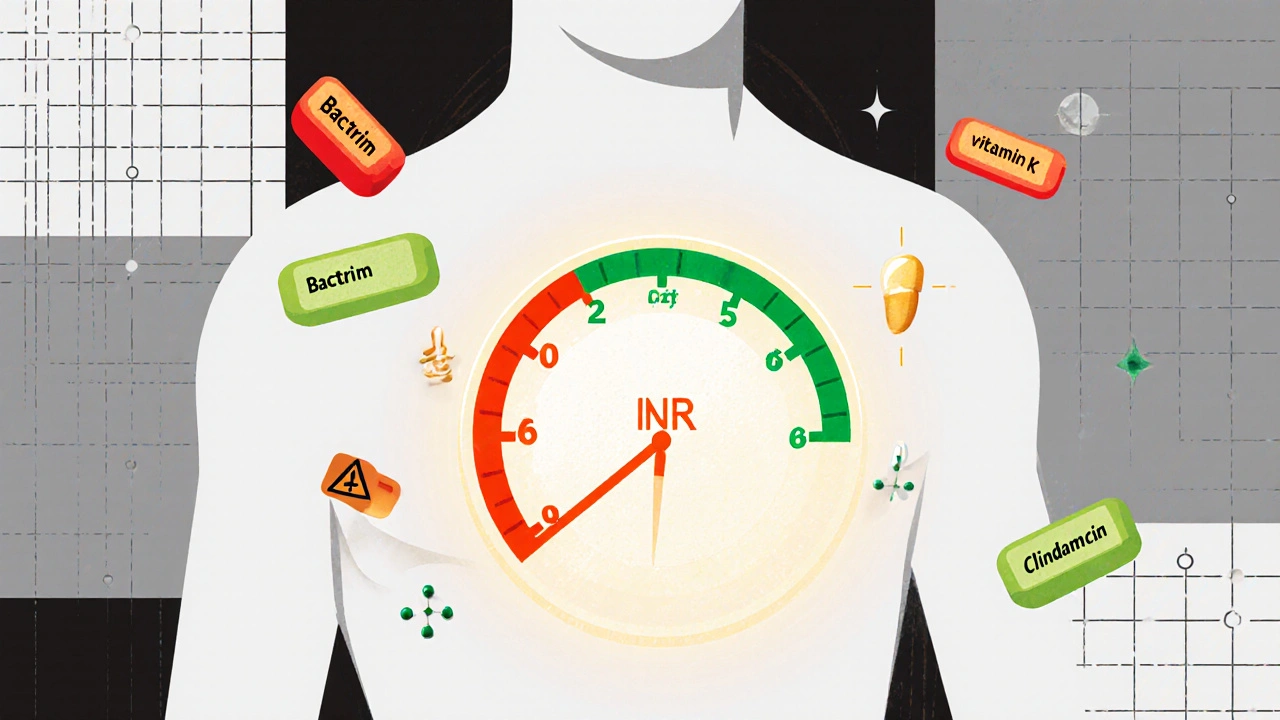Warfarin and Antibiotics: What You Need to Know About Dangerous Interactions
When you take warfarin, a blood thinner used to prevent dangerous clots in people with atrial fibrillation, artificial heart valves, or a history of deep vein thrombosis. Also known as Coumadin, it works by blocking vitamin K, which your body needs to make clotting factors. But warfarin doesn’t play well with many other drugs—especially antibiotics, medications used to kill or slow the growth of bacteria, often prescribed for infections like pneumonia, urinary tract infections, or skin abscesses. Mixing the two can send your INR levels (a measure of how long it takes your blood to clot) soaring or crashing, leading to life-threatening bleeding or unexpected clots.
Some antibiotics, like trimethoprim-sulfamethoxazole (Bactrim), metronidazole (Flagyl), and ciprofloxacin (Cipro), are especially risky. They don’t just add to warfarin’s effect—they interfere with how your liver breaks it down. Others, like amoxicillin or doxycycline, might seem harmless, but even small changes in gut bacteria can alter vitamin K production, tipping the balance. And here’s the catch: you might not feel anything until it’s too late. No warning signs, no pain—just a sudden nosebleed, bruising without injury, or worse. That’s why people on warfarin need regular blood tests when starting or stopping any antibiotic, even over-the-counter ones.
It’s not just about the drug name. Your age, liver health, diet, and even how much spinach you eat can change how warfarin works. One study found that over 40% of patients on warfarin who took an antibiotic had a dangerous INR spike within the first week. And it’s not just the first dose—it’s the whole course. Many people stop antibiotics early when they feel better, but that’s when the interaction can still be active. Your pharmacist isn’t just filling a script—they’re your safety net. Always tell them you’re on warfarin before picking up any new medicine, including herbal supplements or cough syrups.
In the posts below, you’ll find real-world advice on how to manage these risks. From how to time your doses to what symptoms mean trouble, these guides come from people who’ve been there—patients, nurses, and pharmacists who’ve seen what happens when interactions go unnoticed. You won’t find vague warnings here. Just clear, actionable steps to keep your blood thinning where it should be: safe, not scary.

Managing Warfarin and Antibiotics: Common Interaction Issues
- Nov, 1 2025
- 9
Warfarin and antibiotics can interact dangerously, raising bleeding risk. Learn which antibiotics are safest, when to check your INR, and how to avoid serious complications without stopping your medication.
Categories
- Health and Wellness (51)
- Medicine (36)
- Health and Medicine (23)
- Women's Health (9)
- Mental Health (8)
- Men's Health (7)
- Beauty and Wellness (4)
- Health Information (4)
Archives
- December 2025 (12)
- November 2025 (25)
- October 2025 (27)
- September 2025 (14)
- August 2025 (3)
- July 2025 (2)
- June 2025 (2)
- May 2025 (3)
- April 2025 (4)
- March 2025 (4)
- February 2025 (2)
- January 2025 (3)
- online pharmacy
- medication safety
- dietary supplement
- health benefits
- dietary supplements
- prevention
- fertility
- online pharmacy Australia
- treatment
- treatment options
- benefits
- connection
- drug interaction
- drug interactions
- pregnancy
- Cancer Treatment
- depression medication
- antidepressants
- quality of life
- anxiety treatment
